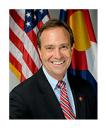Perlmutter Legislation Promotes Going Green To Save Green
Washington, DC – June 11, 2009 – (RealEstateRama) — Today, U.S. Rep. Ed Perlmutter’s (CO-07) GREEN Act (Green Resources for Energy Efficient Neighborhoods) was heard in the House Financial Services Subcommittee on Housing and Community Opportunity.
 HR 2336 provides incentives to lenders and financial institutions to provide lower interest loans and other benefits to consumers, who build, buy or remodel their homes and businesses to improve their energy efficiency. This timely legislation reflects foresight and the considered input of a broad coalition of housing advocates, financial institutions, government leaders, developers, and the environmental community.
HR 2336 provides incentives to lenders and financial institutions to provide lower interest loans and other benefits to consumers, who build, buy or remodel their homes and businesses to improve their energy efficiency. This timely legislation reflects foresight and the considered input of a broad coalition of housing advocates, financial institutions, government leaders, developers, and the environmental community.
In prepared remarks, Perlmutter stated, “Combined, our homes, businesses, schools, governments, and industries consume more than 70 percent of the natural gas and electricity used in the country. The GREEN Act would reduce the harmful effects buildings have on the environment by encouraging energy efficiency and the development of renewable energy resources, thereby creating sustainable communities.”
Furthermore, Perlmutter says, “Moving our housing towards energy efficiency is an idea many support and many legislative proposals address. The GREEN Act strikes the right balance in showing it is easy being green by making energy efficient practices affordable, accessible and achievable for consumers, businesses, and government entities.”
Key Provisions in the Bill Include:
- Provides incentives for new and existing structures financed by HUD to meet or exceed the minimum energy efficiency standards established in the bill.
- Provides that Fannie Mae and Freddie Mac will have a duty to serve very low, low and moderate income communities while developing underwriting standards to facilitate a secondary market for energy-efficient and location efficient mortgages. Notably, it allows the Director of the new GSE regulator to suspend the duty to serve requirement for exigent circumstances.
- Establishes a residential energy efficiency block grant program, with the same formula as the community development block grant program, to distribute grants for the sole purpose of carrying out activities for single-family or multi-family housing that are designed to improve the energy-efficiency of the housing, with a preference to meet the additional efficiency standards highlighted in section 5(b) of the reported bill.
- Requires federal banking regulators to establish incentives for the development and maintenance of “green banking centers” for the purpose of providing information to customers seeking information about acquiring green mortgages.
TESTIMONY FROM REP. PERLMUTTER AS SUBMITTED FOR THE RECORD
Thank you Madam Chairwoman for holding this hearing and for the opportunity to discuss the issue of energy efficiency in housing and commercial buildings.
According to the Department of Energy, buildings are responsible for 39% of U.S. carbon emissions per year and account for 39% of U.S. primary energy use. Combined, our homes, businesses, schools, governments, and industries consume more than 70 percent of the natural gas and electricity used in the country.
As you will hear today, the GREEN Act would reduce the harmful effects buildings have on the environment by encouraging energy efficiency and the development of renewable energy resources, thereby creating sustainable communities.
The GREEN Act is an incentive-based bill that is the work product of the bipartisan Energy Efficiency Task Force. This task force held a number of meetings over the past few years to gather input on how best to address energy efficiency.
H.R. 2336 incorporates the bipartisan changes made in Committee last year, before it was passed in the House as part of the Comprehensive American Energy Security and Consumer Protection Act.
This is an example of the kind of forward thinking we must do to encourage energy efficiency and move our nation towards energy independence. The GREEN Act would take steps toward addressing energy consumption within housing by establishing minimum energy efficiency standards for HUD and providing incentives to the private sector to move our housing and building stock to energy efficient standards. The largest single housing cost for HUD is its utility cost at about $4.6 billion. To the degree HUD and others make their units or homes more efficient, we are going to see dramatic savings on energy costs.
The GREEN Act also establishes a demonstration program of 50,000 units to show it is cost-effective and confirm utility costs will go down. Moving our housing stock towards energy efficiency is an idea many support and many legislative proposals address.
The GREEN Act strikes the right balance in showing it is easy being green by making energy efficient practices affordable, accessible and achievable for consumers, businesses, and government entities.



